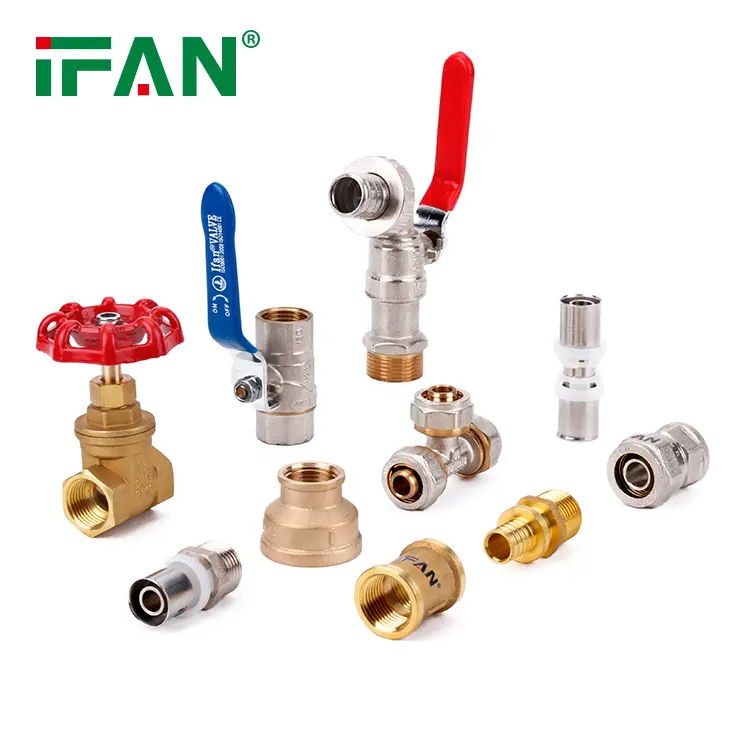Brass bibcocks, commonly used in various applications, play a crucial role in managing water flow. Their safety is paramount in ensuring reliable operation and preventing potential hazards. This article explores the safety aspects of brass bibcocks, including material considerations, design features, installation practices, and maintenance requirements.
Material Safety Considerations
Brass, an alloy of copper and zinc, is widely used for bibcocks due to its strength and durability. However, safety concerns regarding brass primarily revolve around its composition. Some brass alloys may contain lead, which can leach into drinking water. To address this, many countries have regulations that mandate the use of lead-free brass for plumbing fixtures. Lead-free brass minimizes health risks and ensures that the bibcock is safe for use in potable water systems. For example, in the U.S., the Safe Drinking Water Act requires plumbing fixtures to be made from lead-free materials to protect public health.
Design Features Enhancing Safety
The design of brass bibcocks is crucial for ensuring their safety. Key features include:
Secure Seals: High-quality brass bibcocks are equipped with secure seals and gaskets that prevent leaks. Proper sealing minimizes the risk of water damage and reduces the potential for hazardous mold growth.
Pressure Relief: Many brass bibcocks include pressure relief mechanisms to handle fluctuations in water pressure. This feature helps prevent pipe bursts and reduces the risk of leaks.
Ergonomic Handles: Ergonomically designed handles offer better control and reduce the risk of accidental water discharge. Handles that are easy to grip and operate ensure user safety and comfort.
Installation Practices for Safety
Proper installation of brass bibcocks is essential to ensure their safe and efficient operation. Several installation practices enhance safety:
Correct Placement: Brass bibcocks should be installed in locations that are accessible for maintenance and inspection. They should be placed away from areas prone to freezing to prevent damage from ice expansion.
Secure Fittings: Ensure that all fittings are tightly secured and correctly aligned. Loose or improperly connected fittings can cause leaks and pose safety hazards.
Pressure Testing: After installation, conduct pressure tests to check for leaks and ensure the bibcock can handle the expected water pressure. This step is critical for preventing potential water damage.
Maintenance and Safety
Regular maintenance is vital for the safe operation of brass bibcocks. Key maintenance practices include:
Regular Inspection: Inspect brass bibcocks regularly for signs of wear, corrosion, or leaks. Early detection of issues allows for timely repairs and prevents more significant problems.
Cleaning: Clean the bibcock periodically to remove mineral deposits and other debris. This helps maintain smooth operation and prevents blockages that could affect water flow.
Replacing Worn Parts: Replace worn or damaged seals, washers, and other components promptly. Using genuine replacement parts ensures compatibility and maintains safety.
Health and Safety Standards
Brass bibcocks must comply with health and safety standards to ensure they are safe for use. Various standards and regulations govern their design and materials:
Lead-Free Standards: Compliance with lead-free standards is essential for brass bibcocks used in drinking water systems. These standards ensure that the bibcock does not introduce harmful levels of lead into the water supply.
Certification Marks: Look for certification marks from reputable standards organizations. These marks indicate that the bibcock meets safety and quality standards. For instance, NSF International certifies products for compliance with public health standards.
Potential Risks and Mitigation
While brass bibcocks are generally safe, there are potential risks associated with their use:
Corrosion: Brass can corrode over time, especially if exposed to harsh conditions. Corrosion can lead to leaks and reduce the bibcock’s lifespan. Using corrosion-resistant alloys and ensuring proper maintenance can mitigate this risk.
Freezing: In cold climates, brass bibcocks are at risk of freezing, which can cause cracks and leaks. Installing insulation or using frost-proof bibcocks can help prevent freezing-related damage.
Improper Use: Misuse or over-tightening of the bibcock can lead to damage and potential leaks. Educating users on proper operation and maintenance can help prevent such issues.
Examples of Safe Practices
To illustrate safe practices, consider the following examples:
Residential Use: In a residential setting, a lead-free brass bibcock is installed in the garden. Regular inspections and maintenance are conducted to ensure it remains in good condition. The bibcock is placed away from areas that might freeze, and proper sealing is ensured during installation.
Commercial Use: In a commercial building, brass bibcocks are used in various locations, including restrooms and utility rooms. Pressure relief valves are installed to manage water pressure fluctuations. Regular maintenance checks are performed to detect and address any potential issues.
Conclusion
The safety of brass bibcocks is a critical factor in their effectiveness and reliability. By understanding material considerations, design features, installation practices, and maintenance requirements, users can ensure that brass bibcocks operate safely and efficiently. Compliance with health and safety standards, along with proactive maintenance and careful installation, helps mitigate potential risks and ensures that brass bibcocks provide reliable performance for a range of applications.
If you have read this article and have any questions, please feel free to contact IFAN. Below is our contact information:
Whatsapp:+86 13373827623
Email:[email protected]






















































